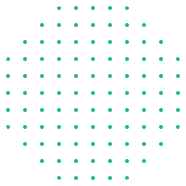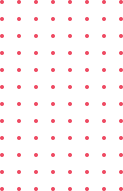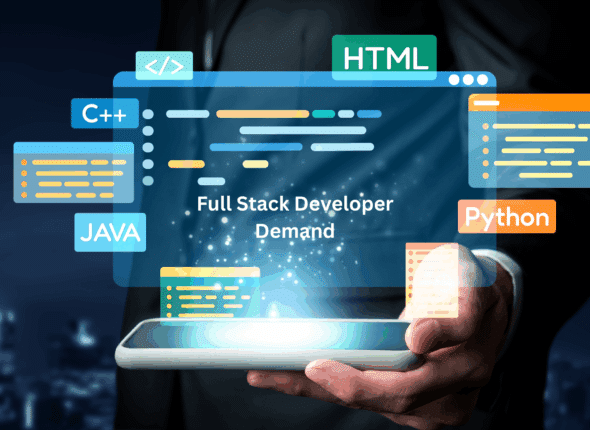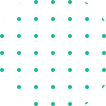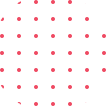World
Class Instructor
1:1 with
Industry Expert
400+
Global Hiring
55%
Avg. Salary Hike
- Overview
- Course Details
- Syllabus
- FAQ
Unlock Vital PHP Skills: Become a Full Stack Developer, Achieve Certification, Propel Your Development Career!
Elysium Academy stands at the forefront of Full Stack Development education, offering a comprehensive program designed to equip participants with the skills to create dynamic web applications from start to finish. Our course ensures that learners grasp PHP fundamentals and apply them proficiently across both frontend and backend development.
Version
Duration
Theory
Practical
Version
2.2
Duration
65 Hours
Theory
12 Hours
Practical
65 Hours
- Industry Based Projects
- Personalized coordinator.
- Trainer feedback.
- Trainer availability post sessions.
- Get your staff certified.
- Certificate from governing bodies.
- Recognized worldwide
- Hands on assignment
- Master PHP Fundamentals: Grasp essential PHP concepts, including variables, loops, and functions.
- Advanced PHP Development: Explore advanced topics like object-oriented programming and error handling.
- Database Integration: Learn to integrate PHP with databases for dynamic data-driven applications.
- Frontend Development: Build responsive and interactive frontend interfaces using HTML, CSS, and JavaScript.
- Backend Development: Develop robust backend systems and APIs using PHP frameworks like Laravel.
- Deployment and Maintenance: Deploy and maintain PHP applications effectively in various environments.
Top companies offer this course to their employees
Course was selected for our collection of top-rated courses trusted by businesses worldwide.


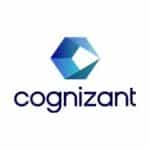

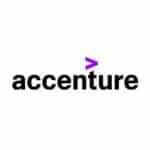
Salary
PER ANNUM
₹4,50,000
Job Growth
Current Month
19%
Offer Jobs
2026
7,000
Embark on the journey to become a Full Stack Developer with our comprehensive PHP program. Dive into the dynamic world of web development and learn PHP, along with essential frontend and backend technologies, guided by seasoned instructors. By the end of the course, you’ll be equipped to tackle real-world development challenges head-on.
Our Full Stack Developer Course – PHP is designed to equip you with the necessary skills to excel in web development. You’ll master PHP programming fundamentals and delve into advanced topics such as building dynamic web applications, integrating databases, and creating responsive frontend interfaces.
- Master both front-end and back-end development with proficiency in PHP, JavaScript, HTML, CSS, and MySQL.
- Rapid growth potential into senior developer, tech lead, or project manager roles.
- Ability to develop dynamic web applications, content management systems, and e-commerce platforms.
- Leverage PHP skills to create and launch your own web-based products or businesses.
- Access a large, supportive network of PHP developers for collaboration, resources, and troubleshooting.

Our Training Program Benefits
- Live, interactive training by experts.
- Curriculum that focuses on the learner.
- Challenge-based, hands-on project.
- Opportunities for team building.
- Cost- saving training.
- Convenient for your employees.
- Completely tailor-made curriculum.
Chapter-1 Introduction to HTML5
- Development Environment Setup
- What is HTML?
- Relevant History of HTML
- Anatomy of an HTML Tag
- Basic HTML Document Structure
- HTML Content Models
- Heading Elements (and some new HTML5 Semantic comments)
- Lists
- HTML Character Entity Reference
- Creating Links
- Displaying Images
Chapter-2 Introduction Of CSS3
- Power of CSS
- Anatomy of a CSS Rule
- Element, class, and ID Selectors
- Combining Selectors
- Pseudo-class Selectors
- Style Placement
- Conflict Resolution
- Styling Text
- The Box Model
- The Background Property
- Positioning Elements by Floating
- Relative and Absolute Element Positioning
- Media Queries
- Responsive Design
- Introduction to Twitter Bootstrap
- The Bootstrap Grid System
Chapter-3 Introduction to JavaScript
- Adjusting Development Environment for JavaScript Development
- Where to Place JavaScript Code
- Defining Variables, Function, and Scope
- JavaScript Types
- Common Language Constructs
- Handling Default Values
- Creating Objects Using 'new Object()' Syntax
- Creating Objects Using Object Literal Syntax
- Functions Explained
- Passing Variables by Value vs. by Reference
- Function Constructors, Prototype, and the 'this' Keyword
- Array
- Closures
- Fake Namespaces
- Immediately Invoked Function Expressions (IIFEs)
Chapter-4 Using Java Script to build Web Application
- DOM Manipulation
- Handling Events
- The 'event' Argument
- HTTP Basics
- Ajax Basics
- Processing JSON
- Fixing Mobile Nav Menu Automatic Collapse
- Dynamically Loading Home View Content
- Dynamically Loading Menu Categories View
- Dynamically Loading Single Category View
- Changing 'active' Button Style through JavaScript
Chapter-5 Introduction to PHP
Getting Started with PHP
- What is PHP?
- Why PHP?
- What can PHP do?
- How PHP works
- Advantages of using PHP
- Websites that use PHP
PHP Software Requirements
- Download Xampp/LAMP/WAMP/MAMP
- Install Xampp on Windows
- Troubleshooting
- Coding standards
- Basic syntax
- Comments
PHP Fundamentals
- Variables
- Variable scope
- $ and $$ Variables
- Super global Variables
- Var_dump
- Swap Two Numbers
- Constants
- Magic constants
- Echo and Print
- Data Types
- Operators
- Arithmetic Operator
- Assignment Operator
- Comparison Operator
- Logical Operator
Control Structures
- Conditional Statements
- If statement
- If-else statement
- If-else if-else statement
- Switch Statement
- Loop Statements
- while Loop
- do-while Loop
- for Loop
- for-each Loop
- Jump Statements
- Break statements
- Continue statements
Chapter-6 Beginner Level PHP
- PHP Functions
- Parameterized Function
- Call by reference
- Call by Value
- Default Arguments
- Variable Arguments
- Recursive Functions
- PHP Array
- Indexed Array
- Associative Array
- Nested Array
- Array Iterators
- PHP CAPTCHA
- Recursive Functions
- String Functions
- Numeric Functions
- isset Function
- Math Functions
- Date and Time Functions
Chapter-7 Object Oriented
- What is OOPs?
- Class and objects
- Creating a simple class
- Creating an object
- Creating and accessing Properties
- Creating and accessing Constants
- Creating and accessing methods
- This keyword
- Constructors
- Initial parameter passing
- Inheritance
- Private and Protected Properties
- Static Properties and methods
- Polymorphism
- Encapsulation
- Multiple Constructor, Destructor
- Final Keyword
- Interfaces
- Abstract Classes
Chapter-8 Implementing Forms
PHP Form Basics
- Why Forms Must
- How Forms Works
- GET vs POST
- Form Data and PHP
- Simple Registration
Processing Form Data
- Introduction
- Form Data Workflow
- Never Trust User Inputs
- Text Fields
- Check Boxes and Radio Buttons
- Selection Lists
- Buttons
- Image Buttons
- More Form Fields
Form Validations
- Introduction
- Form Data Workflow
- Never Trust User Inputs
- Text Fields
- Check Boxes and Radio Buttons
- Selection Lists
- Buttons
- Image Buttons
- More Form Fields
Form Validations
- Introduction
- Validation Types
- Validating Forms
- Displaying Error Messages
- Prefilling Text Fields
- Prefilling Checkboxes and Radio Buttons
- Prefilling Lists
- Finalize the code
Working with Files
- Managing Files
- Reading Whole/Partial Files
- Writing to Files
- Other File Operations
- File Metadata
- File Permissions
- Working with File Systems Querying the File System
- Reading Directories
- Navigating, Creating, and Deleting Directories
- Sending and Receiving Files with Web Services
- Introduction Sending Files from a web service
- Receiving files from POST Requests
- Receiving files from PUT Requests
- Security Consideration
- Security a web service
File Uploads
- Introduction
- Setting up the forms
- Analyze the HTTP Request
- The $_FILES Array
- Helper Functions
- File Upload Progress Option
PHP Form Basics
- Why Forms Must
- How Forms Works
- GET vs POST
- Form Data and PHP
- Simple Registration
Processing Form Data
- Introduction
- Form Data Workflow
- Never Trust User Inputs
- Text Fields
- Check Boxes and Radio Buttons
- Selection Lists
- Buttons
- Image Buttons
- More Form Fields
Form Validations
- Introduction
- Form Data Workflow
- Never Trust User Inputs
- Text Fields
- Check Boxes and Radio Buttons
- Selection Lists
- Buttons
- Image Buttons
- More Form Fields
Form Validations
- Introduction
- Validation Types
- Validating Forms
- Displaying Error Messages
- Prefilling Text Fields
- Prefilling Checkboxes and Radio Buttons
- Prefilling Lists
- Finalize the code
Working with Files
- Managing Files
- Reading Whole/Partial Files
- Writing to Files
- Other File Operations
- File Metadata
- File Permissions
- Working with File Systems Querying the File System
- Reading Directories
- Navigating, Creating, and Deleting Directories
- Sending and Receiving Files with Web Services
- Introduction Sending Files from a web service
- Receiving files from POST Requests
- Receiving files from PUT Requests
- Security Consideration
- Security a web service
File Uploads
- Introduction
- Setting up the forms
- Analyze the HTTP Request
- The $_FILES Array
- Helper Functions
- File Upload Progress Option
Chapter-9 Cookies and Sessions in PHP
- Why Cookies and Sessions
- Introducing Cookies
- Introducing Sessions
- Creating Cookies
- Updating Cookies
- Deleting Cookies
- Best Practices for Cookies
- PHP Session Configuration and Functions
- Making Configuration Changes
- Initializing Session
- Destroying Session
- Using Session in Login Form
- Storing Session in Database
- Creating Custom SessionHandler
- Session Security Threats
- Session Security Measures
- Handling Session Security
Chapter-10 Authentication and Authorization
- What is Authentication
- HTTP Authentication
- HTTP Authentication
- HTTP Basic Authentication
- HTTP Digest Authentication
- HTTP+HTML (Form Based) Authentication
- Form based Authentication
- Advantages/Disadvantages
- Implement Form Based Authentication
- What is Authorization
- ACL (Access Control Lists)
- What are Access Control Lists
- Implementing Access Control Lists
- RBAC (Role Based Access Control)
- What is Role-based Access Control
- Advantages/Disadvantages
- Implement Role-based Access Control
- What are JSON Web Tokens
- Advantages/Disadvantages
- Implement JSON Web Tokens in PHP
Chapter-11 Working with Databases
- Introduction
- PHP, MySQL, and MariaDB
- PHP and Microsoft SQL Server
- PHP and MySQL
- PHP and MariaDB
- PHP and Azure SQL DB
- Introduction
- Configuring PDO for PHP
- Configuring MySQLi Database Integration
- Connecting to MySQL using PDO
- Connecting to MySQL using MySQLi
- Connecting to Azure using PDO
- NoSQL Support in PHP
- New MongoDB Server for PHP
- Creating a Test MongoDB Database in Atlas
- Working with MongoDB in PHP
- Introduction
- Reading Data
- Updating Data
- Deleting Data
- Introduction
- Prerequisites
- Using the MySQLi Extensions
- Preventing SQL Injection
- Inserting Data
- Prepared Statements
- Registration page
- Login Page
- Website - Sample
Chapter-12 Laravel Framework
- Introduction
- PHP, MySQL, and MariaDB
- PHP and Microsoft SQL Server
- PHP and MySQL
- PHP and MariaDB
- PHP and Azure SQL DB
- Introduction
- Configuring PDO for PHP
- Configuring MySQLi Database Integration
- Connecting to MySQL using PDO
- Connecting to MySQL using MySQLi
- Connecting to Azure using PDO
- NoSQL Support in PHP
- New MongoDB Server for PHP
- Creating a Test MongoDB Database in Atlas
- Working with MongoDB in PHP
- Introduction
- Reading Data
- Updating Data
- Deleting Data
- Introduction
- Prerequisites
- Using the MySQLi Extensions
- Preventing SQL Injection
- Inserting Data
- Prepared Statements
- Registration page
- Login Page
- Website - Sample
- Introduction
- Prerequisites for Laravel
- What is Laravel
- Installing Laravel and Creating a New Project
- Running a Development Server with Artisan CLI
- Running an Existing Laravel Application
- Defining Routes
- Creating Views
- Blade Templates
- Extending the Master Layout
- Naming Routes
- Serving Static Assets
- Implementing Active Links with Blade Directives
- Receiving Form Input with POST Routes
- Securing Input Data with CSRF Tokens
- Resolving Dependencies
- Flashing Session Data
- Validating User Inputs
- Showing Error Messages and Old Input
- Creating an Error Subview
- Grouping Routes and Views
- Handling Requests with Controller Actions
- CRUD Operations
- Creating Resource Controllers
- Implementing Resource Routes
- Setting up the Database
- Migrations and Models
- Creating the Post Model
- Saving Posts to the Database
- Passing Data to Blade Templates
- Checking for Empty Collections
- Creating Cookie
- Retrieving Cookie
Chapter-13 Eloquent ORM
- Errors and Logging
- Errors
- Logging
Chapter-14 Localization
- Configuring the locale
- Defining translation strings
- Overriding package language files
Chapter-15 Session
- Accessing Session Data
- Storing Session Data
- Deleting Session Data
Chapter-16 File Uploading
- Add Controller
- Add Routes
- Add Blade File
- Upload a File Using Storage Disk
Chapter-17 Ajax
- Data Connection
- Create Migration and Model
- Create Controller
- Create Add Routes
- Create Blade File
- Create Layout
- Create Ajax Request
- Define Ajax Logic
Chapter-18 Error Handling
- Introduction
- Configuration Overview
- Reporting Exceptions
- Exception Log Levels
- Ignoring Exceptions by Type
- Rendering Exceptions
- Reportable & Renderable Exceptions
Chapter-19 HTTP Exception
- HTTP custom error pages
Chapter-20 Event Handling
- HTTP custom error pages
Chapter-21 Facades
- Introduction
- When to Use Facades
- How Facades Work
- Real-Time Facades
- Facade Class Reference
Chapter-22 Security
- Authentication
- Authorization
- Email Verification
- Encryption
- Hashing
- Password Reset
Chapter-23 CakePHP
- CakePHP Structure
- Setup Your Own Web Server
- Install CakePHP
- CakePHP Naming Conventions
- Create Custom Layout
- Create Controller
- Get Data from Database
- Insert Data
- Data Validation
- Delete Data
- Linking Models Together
- CakePHP Helpers
- CakePHP Components
- Pagination
- Ajax in CakePHP
Chapter-24 YII
- Introduction to MVC
- Model
- View
- Controller
- Passing Data to View from Controller
- Partial View
- Understanding Layout
- Passing Data to Layout with Parameters
- Passing Data to Layout with Session
- Passing Data to Partial View
- Changing Advanced Website Template
- Changing Basic Website Template
- Replicating Basic Template on Advanced
- Enable Pretty URL
- Setup .htaccess File
- Passing Parameters to URL
- Retrieving Parameters from URL
- Remove Parameter Title from URL to Look Pretty
- HTML Helpers - Tags
- HTML Helpers - ActiveForm
- HTML Helpers - Img, Link
- HTML Helpers - UI, OI
- HTML Helpers - Form 1
- HTML Helpers - Form 2
- URL Helpers 1
- URL Helpers 2
- Array Helpers - Introduction, getValue
- Array Helpers - Validate Array
- Array Helpers - getColumn, Index, map
- Array Helpers - multiSort, isln, merges
- Connecting to Database
- Migration
- Multiple Database Connections
- Signup
- Login
- Check Authentication in Views
- Logout
- Add More Fields to Signup
- Controller Authentication
- Controller Authentication 2
- Separate Frontend and Backend Login Table
- Insert Record
- Read All Records from Table
- Read One Record from Table
- Update Record
- Delete Record
- Authenticate ActiveRecord Actions
- Faker
- Read All Data in a Table
- Filter Columns and Set Conditions of Data
- Order Posts, Count, and Limit Posts to Be Fetched at a Time
- View Post Details
- Sluggable ID
- Connect Model to Another Database
- Creating Widgets
- GridView
- GridView - Format Column
- GridView - ActionColumn
- ListView
- DetailView
- Pagination
- PJax - Inserting Record
- Generating Model
- Generating Controller
- Generating Form
- Generating CRUD
- Generating Module
- Generate CRUD for Module
- Generating Model from Second Database
- HasOne Relations
- Has Many Relations
- File Upload
- Upload Multiple Files
- Display Post Image
- Installing FileInput Extension using Composer
- Installing TinyMCE with composer.json
- Password Security
- Generate Pseudorandom Data
- Data Encryption and Decryption
- Setup Error Page
- Extract Error Code and Message
- Understand Error Debugging
- Log Errors
- Enable or Disable Error Debugger
- Configure Application Production Environment
- Reconfiguring Frontend File Structure
- Reconfiguring Backend File Structure
- Push Files to Server
- Configure Application to Live Database
- htaccess Configuration
Chapter-25 Project
- Project
What is the Full Stack Developer Course - PHP offered by Elysium Academy?
The Full Stack Developer Course - PHP at Elysium Academy covers end-to-end web development using PHP, including front-end technologies, MySQL, and popular PHP frameworks like Laravel. This course is perfect for those looking to specialize in full-stack PHP development.
What makes Elysium Academy the best Full Stack Developer training center near me?
Elysium Academy excels in Full Stack Developer training in PHP due to its detailed curriculum, hands-on projects, and expert faculty who provide in-depth knowledge and practical experience in PHP-based web development.
What are the prerequisites for enrolling in this course?
Basic understanding of programming concepts and familiarity with HTML, CSS, and JavaScript would be beneficial but not mandatory. Our course is structured to accommodate learners at various skill levels.
What will I learn in this course?
You will learn PHP programming, along with frontend technologies like HTML, CSS, and JavaScript, as well as backend concepts such as database management, server-side scripting, and MVC architecture.
Who will be teaching the course?
Our course instructors are experienced professionals with extensive knowledge in PHP development. They are dedicated to providing high-quality instruction and guidance throughout the course.
Will I receive any certification upon completion of the course?
Yes, upon successful completion of the course and assessment, you will receive a certification from Elysium Academy, recognizing your proficiency as a Full Stack Developer with a focus on PHP.
Are there any practical projects included in the course?
Yes, the course includes hands-on projects and assignments that allow you to apply your skills to real-world scenarios. These projects will help reinforce your learning and build your portfolio.
How long is the duration of the course?
The duration of the Full Stack Developer Course - PHP varies depending on the program format chosen (e.g., full-time, part-time, online). Please refer to the course details for specific information on duration.
Is this course suitable for beginners with no prior programming experience?
Yes, our course is designed to cater to individuals with varying levels of experience, including beginners. Our instructors will provide step-by-step guidance to ensure you grasp the concepts effectively.
Will I have access to course materials after completing the program?
Yes, you will have access to course materials, including video lectures, presentations, and code samples, even after completing the program. This allows you to review the content as needed and stay updated on industry trends.
How can I enroll in the Full Stack Developer Course - PHP?
To enroll in the course, simply visit our website or contact our admissions team. They will guide you through the enrollment process and provide any additional information you may need.

- Full Stack Developer Course - Php Professional Training Course
- Duration: 90 Hours
- Level: Beginner
- Days: 45 Days
- Chapters: 25
- Language: English
- Certifications: Yes
- Code: EAPL/PROF/PRTC09
- Course Code: EAPFN
- Sub Category: Full Stack Development Training Course
Thank you!
We will contact you soon.
Full Stack Developer - Php Features

Comprehensive PHP Programming
Dive deep into PHP programming language covering syntax, data types, functions, and advanced concepts necessary for backend development.

Dynamic Web Development with PHP
Master frontend technologies like HTML, CSS, and JavaScript to create responsive and interactive user interfaces for web applications.

Frontend Development with HTML, CSS, and JavaScript
Professionals have the opportunity to acquire comprehensive knowledge in cutting-edge digital marketing through specialized certification programs.

Database Integration MySQL
Gain expertise in integrating MySQL database with PHP applications, including database design, querying, and data manipulation.

Full Stack Project
Engage in hands-on projects to develop full-stack web applications from scratch, applying PHP for backend logic and frontend technologies for UI/UX.

Deployment and Hosting
Learn the process of deploying and hosting PHP applications on web servers, including configuring servers, managing domains, and ensuring security.
What Will You Learn?
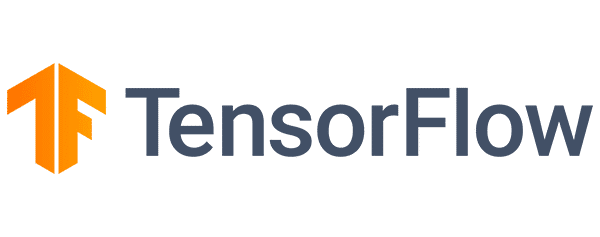
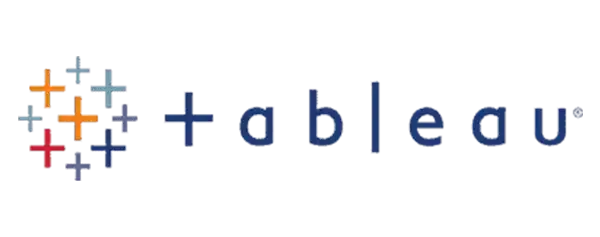
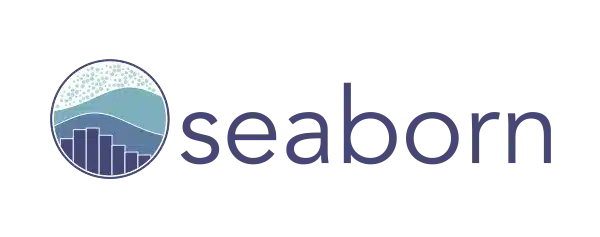
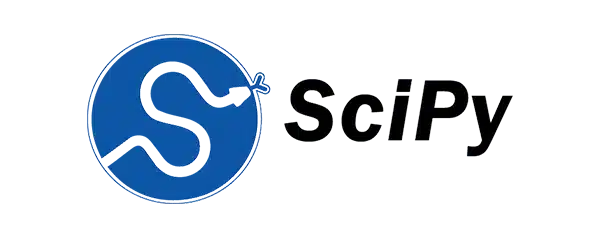
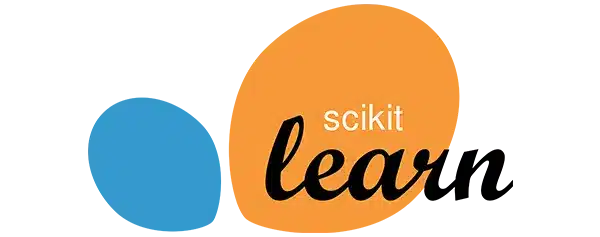

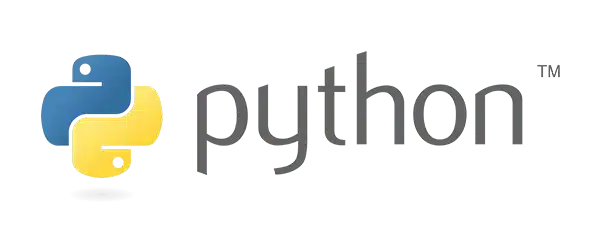
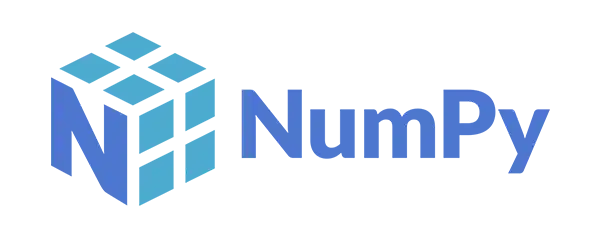
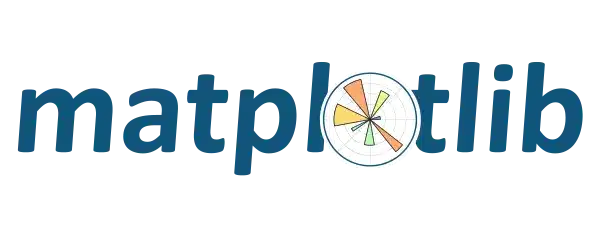
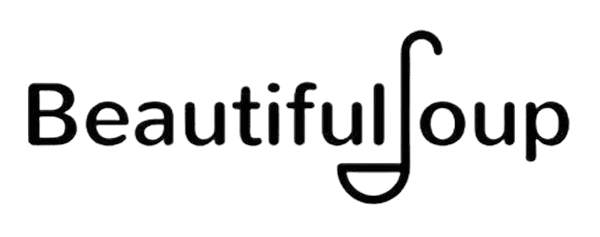
Our Latest Blogs
AI Powered Digital Marketing Course – 12 Must-Know AI Trends in Digital Marketing
In an increasingly digital world, the demand for smart, data-driven, and automated marketing solutions is rising at a breakneck pace.…
Full Stack Developer Demand, Skills, and Compensation
Full Stack Developer Demand , Skills, and Compensation Introduction : The Strategic Importance of the Full-Stack Developer The full-stack developer—a…
5 Surprising Truths About a Career in JavaScript
Introduction : 5 Surprising Truths About A Career in JavaScript Beyond the Code Web development is often seen as a…
Related Courses
AI Mastery For Entrepreneurs Programme
Master the essentials and advanced techniques of Python programming with our comprehensive Core & Advanced Python Training Course.
AI Engineering For Developers
Master the essentials and advanced techniques of Python programming with our comprehensive Core & Advanced Python Training Course.
AI Power Digital Marketing
Unlock the power of online marketing with our Digital Marketing Fundamentals Training Course. Master SEO, SEM, content marketing.

Recommend your friends/colleagues and earn gift vouchers worth up to INR 1000/-!
Invite friends to join our community, and receive valuable gift vouchers as a token of appreciation for each successful referral. Spread the word about our referral program today and start earning rewards!











